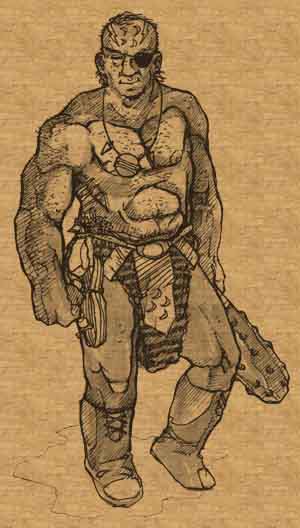|

|
An ogre (feminine: ogress) is a large, cruel, monstrous and
hideous humanoid monster, featured in mythology, folklore and fiction.
Ogres are often depicted in fairy tales and folklore as feeding on human
beings, and have appeared in many classic works of literature. In art, ogres are often depicted with a large head, abundant
hair and beard, a voracious appetite, and a strong body. The term is often
applied in a metaphorical sense to disgusting persons who exploit, brutalize or
devour their victims. Closely related is the troll figure, although these are sometimes not as
malevolent.The word ogre came into wider usage in the works of Charles Perrault
(1628-1703) or Marie-Catherine Jumelle de Berneville, Comtesse
d' Aulnoy (1650-1705), both of whom were French authors. Other sources say
that the name is derived from the word Hongrois, which means Hungarian. The word ogre
is thought to have been popularized by the works of Italian author Giambattista
Basile (1575-1632), who used the Neapolitan word uerco, or in
standard Italian, orco. This word is documented
in earlier Italian works (Fazio degli Uberti, XIV cent.; Luigi Pulci, XV; Ludovico Ariosto,
XV-XVI) and has even older cognates with the Latin orcus and the
Old English orcneas found in Beowulf lines 112-113. All these words may
derive from a shared Indo-European mythological concept (as Tolkien himself
speculated, as cited by Tom
Shippey, The Road to Middle-earth, 45). Some see the French myth of
the ogre as being inspired by the real-life crimes of Gilles de Rais.
The first appearance of the word ogre in Perrault's work occurred in
his Histoires ou Contes du temps Passť (1697). It later appeared in
several of his other fairy tales, many of which were based on the Neapolitan tales of Basile. The first
example of a female ogre being referred to as an ogress is found in his
version of Sleeping
Beauty, where it is spelled ogresse. The Comtesse d' Aulnoy first
employed the word ogre in her story L'Orangier et l' Abeille
(1698), and was the first to use the word ogree to refer to the
creature's offspring.
|
 Copyright(c) 2007
- 2020. All rights reserved. Copyright(c) 2007
- 2020. All rights reserved.
|

![]() Copyright(c) 2007
- 2020. All rights reserved.
Copyright(c) 2007
- 2020. All rights reserved.